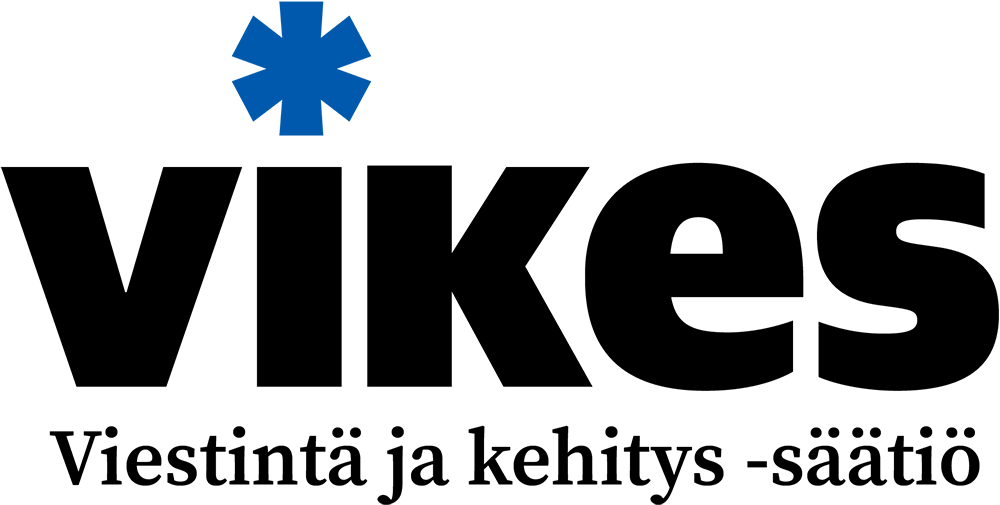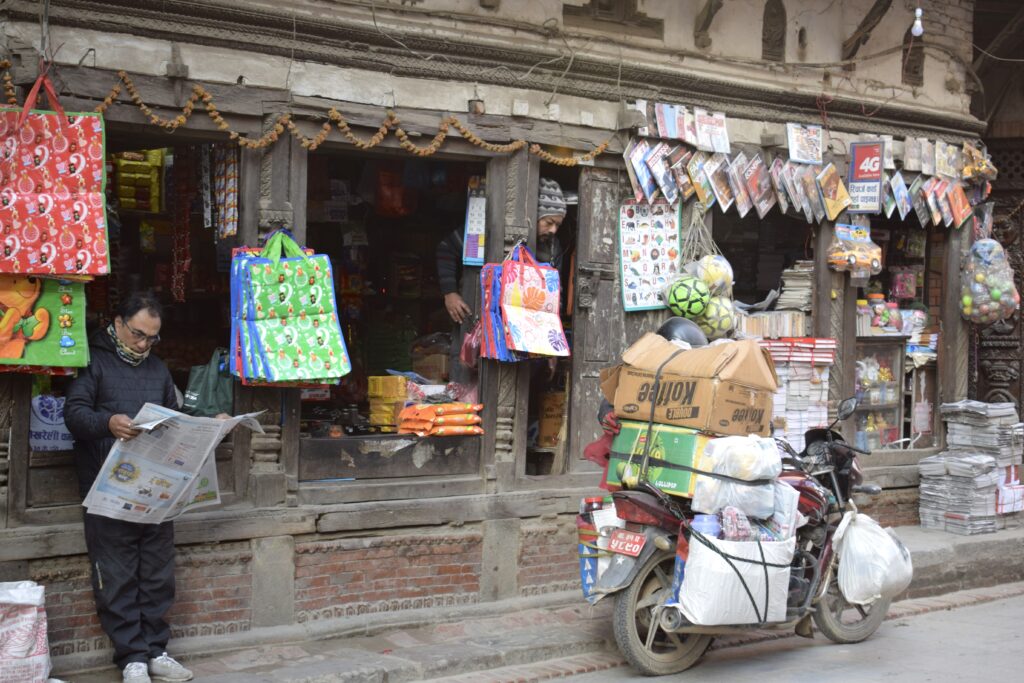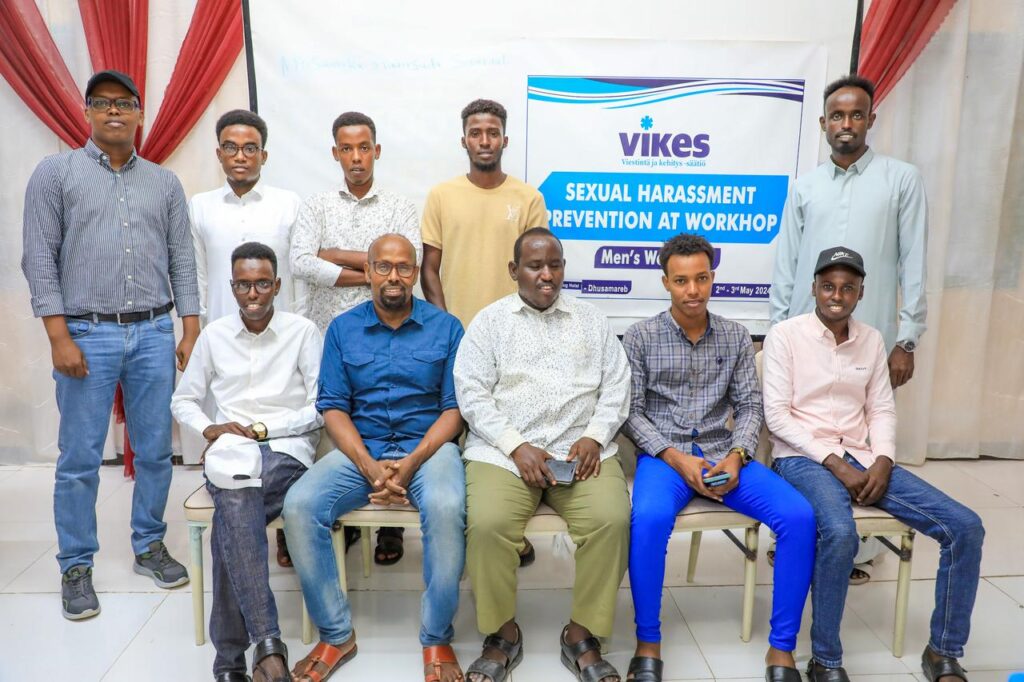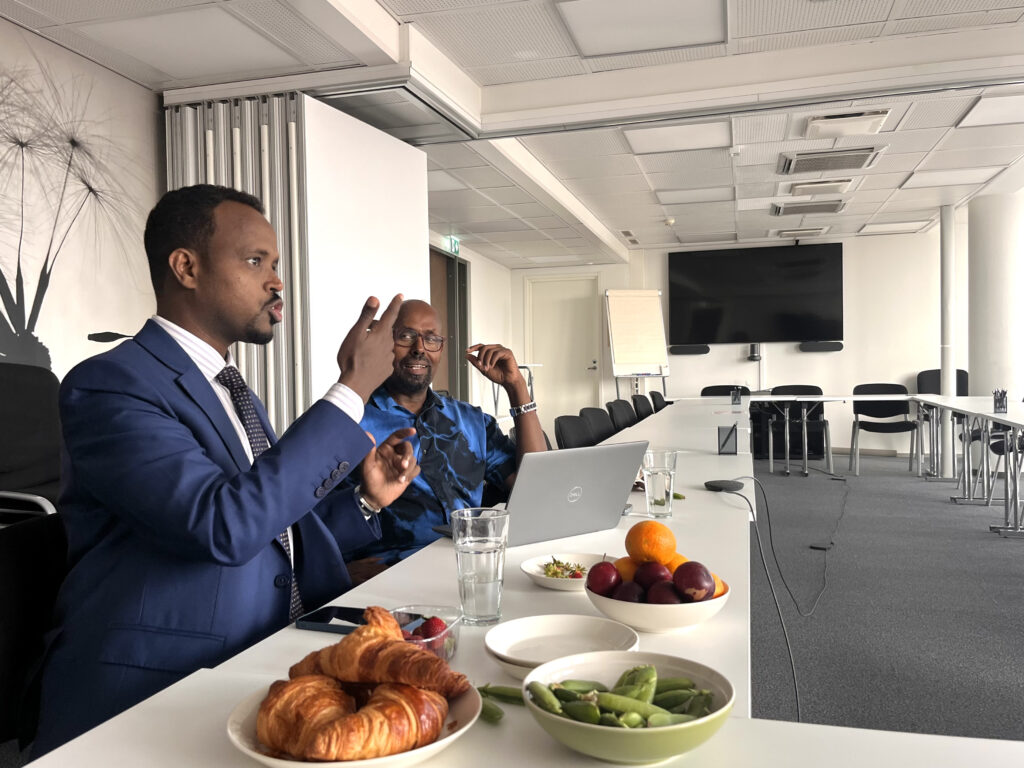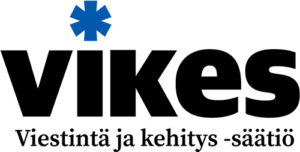The media has the power to create an image of migrants as “the other”, said Michele Ferris Dodles at a training session for young journalists in Slovakia. The training explored how migration and the world could be approached from different perspectives.
In the last part of the Between the Lines training, participants and speakers had gathered to discuss the differences between Western and Eastern journalism. When the Western media talk about migration, they almost invariably talk about migration to Western countries, very often through problems. The West is seen as the place where everyone wants to go and Europe has even been thought of as the end point of cultural development. The rest of the world is often presented through a very narrow imagery, which also maintains a stereotypical image of the rest of the world.
But what if you look at immigration from the global south, what would the world look like? What do one-sided images do to the immigration debate? How should immigration be dealt with in the media in general?
These were the topics discussed at the Between the Lines training in Bratislava, the Slovak capital, at the end of June. The aim of the training for young journalists was to provide new perspectives on Western journalism and migration. The training included presentations from a Costa Rican researcher and journalist Michele Ferris Dobles, journalist Tom Law, who leads the media policy work of the Global Forum for Media Development, Shani Orgad, Professor of Media and Communication at the London School of Economics (LSE), Beata Balogová, Editor-in-Chief of SME, Slovakia’s largest newspaper, and Nicholas Watson, a long-standing journalist and member of the Balkan Investigative Reporting Network. The training was attended by journalists from Slovakia, Poland, the Czech Republic, Estonia and Finland.
Immigration is happening outside the West
“The media is not telling the whole truth about immigration”, said Michele Ferris Dobles in her first speech at Between the Lines.
Based in Costa Rica, Dobles is a researcher and journalist with a special interest in migration in Central America. Central America and immigration have featured prominently in the US media, unfortunately in a negative light. Former US President Donald Trump has spoken publicly about Central American immigrants as thugs and criminals. He has even spoken of an invasion and a national emergency.
“Of course, this framing is not correct. Central Americans migrate for a better life – like many others. Immigration is part of human history. It is natural to change,” said Dobles.
“The large numbers of people leaving Central America are also part of the migrants’ coping strategy. In a large group, they are safe and can have some influence on the media image.”
Another point that came up during the Between the Lines training, when young journalists discussed the issue, was that there is a lot of evidence, research and facts in favour of immigration. Inhuman news coverage and threat and victim narratives do not help to change attitudes. Instead, we need different stories.
In her speech, Dobles pointed out how Central America is known for immigration – albeit in a very one-sided way. Most migration takes place within Central America. In particular, the economically and politically more stable Costa Rica attracts migrants from other Central American countries, especially from Nigaragua. Costa Rica is both an immigration and an emigration country.
Although Costa Rica has had to share with the rest of Central America the image of “problematic” Central American migrants, the Costa Rican media maintains a problematic image of migrants within the country, especially from Nicaragua. Despite the fact that the language and culture between these peoples are very similar.
“The political history of the region has created an image of Costa Rica as a better country,” Dobles said.
Costa Rica has had a very different political development from other Central American countries: it did not experience a political revolution during the Cold War and has largely acted as an ally of the United States. Political history has put the country in a different position.
“We have a lot to do with the image of who is welcome and who is not.”
Dobles stresses that the media has the power to create an image of migrants as the other. The media should frame migrants as people.
“We need discussions within the migrant community itself. Quick news is not enough, time, listening and attention are needed. These issues are complex. You also have to understand the power that stories have.”
The images created by journalism have ethical implications
Professor Shani Orgad from LSE University, who specialises in immigration, media and gender studies, spoke about the images created by the media. Orgad believes that journalism has a poor imagination. It produces very one-sided images of the world.
“For example, we get very warlike images of certain countries, but the reality is different. The imagery offered by the media is very narrow and selective,” said Orgad.
One-sided imagery also has ethical implications. Like the fact that refugees are often dehumanised in public discourse. Refugee camps are spoken of as jungles. Refugees are associated with disaster jargon such as refugee wave and refugee crisis. Refugees are filmed in cages. Some politicians even talk about parasites and snakes – they use words that have been heard before in the context of the Holocaust.
“The media influences the way we see the world. The media creates images of how things are and how they should be,” said Orgad.
During the training, Orgad gave the journalists the task of looking at the front pages of different online magazines as “aliens” and deducing what the world is like from them. Five different newspapers from the Slovakia Spectator to the BBC conveyed a very similar picture: disasters, economics and politics led by white men. The world is largely presented through hard values. The narrow media coverage partly explains the narrow picture of immigration.
But the war in Ukraine has shown that perceptions can be changed. The image of migrants, in this case refugees, has expanded to include people from outside the Global South. Ukrainian refugees have been portrayed as people, showing emotions, innocence, mothers, children and the help offered by other countries.
In the media coverage of the war in Ukraine and the interest rate pandemic, much has been made of the fact that we are the whole world in this together. However, Orgad questions this
“What is the whole world? In reality, many countries have been left to fend for themselves with interest rates or are unable to help Ukraine because of their own crises.”
How to deal with the hate speech attracted by immigration?
The media unfortunately often provide a platform for hate speech. The media’s job is to report the world as it is, and of course, silencing hate speech does not eliminate its existence. However, it is important to recognise when reporting hate speech does more good than harm. In addition to communicating the truth, the media have a responsibility to cause as little harm as possible.
Journalism is needed to contextualise and bring out a broader perspective. Hate speech is rife, especially on social media, and the moderation guidelines are very Western in their approach. They allow the display of Nazi symbols, but prohibit the dissemination of an image of Osama bin Laden, for example.
“Most of the public may not understand hate speech. It can be very subtle. It is like a dog whistle whose call is heard by few,” said Tom Law of the Global Forum for Media Development.
Law highlighted how, for example, milk and the OK sign have become symbols of hate speech in certain contexts. The OK sign was inspired by the internet image, which was intended to convince the media and the left that the sign was the letters W and P (white power). The “joke” finally escalated to the point where the far right has adopted the sign. White supremacists have also widely adopted milk as a symbol of their movement.
Hate speech can be difficult to demonstrate, especially if you don’t know the history. Many politicians have used the same rhetoric about immigrants as the Nazis did about Jews. The dehumanisation of immigrants follows very much the same pattern as the propaganda of Nazi Germany. Yet pointing out similarities with Nazism may benefit the opposite camp.
Law raised the example of British politician Nigel Farage and his campaign poster, which had a lot of similarities with Nazi propaganda. However, pointing out similarities in the media was also an opportunity for Farage to present himself as a victim of the media and thus appeal to his supporters: how can a worried bourgeois suddenly be talked about as a Nazi, can nothing be said anymore?
How and when should hate speech be dealt with in the media? Law presented the Ethcial Journalism Network’s five-point test to young journalists. The media should not only focus on what is said, but also on what is meant by the words. Whether speech is dangerous and who can be harmed by it. We should also weigh up who is spreading hate speech: whether it is a significant person or someone who can be ignored.
“You don’t always have to quote directly, but you can also explain what the speaker really means. You always have to contextualise the speech,” said Law.
Journalists and the media also need to look at how immigration is framed: whether it is framed in terms of heroes and threats, whether it focuses on men or women, whether it talks about the benefits and drawbacks. The media also rarely cover broader issues, such as the impact of immigration on the countries from which migrants leave.
“What is missing from the immigration story are solutions, all the benefits that immigration brings. We need more solutions journalism, just emotional stories are not enough,” said Law.
The supplier must be able to distinguish right from wrong
Although we often talk about Western media, there are big differences in the way journalism works within Europe alone. However, it is not more than thirty years since communism restricted freedom of expression in Eastern European countries.
“Before the revolution, journalism was seen through the lens of communism even at university. The revolution liberated journalism, but everything had to start from scratch,” said Beata Balogová, a long-time Slovak journalist, in the final presentation of the Between the Lines training.
Balogová and Nicholas Watson, a journalist with the BIRN network for freedom of expression and democracy in Eastern Europe, recall how in the beginning there were no rules in Slovak journalism. The news was also very different from the Western European type of story – there could be a missing thread and the most interesting part of the story was left at the end. We have come a long way since those days, and the Slovak media are beginning to set standards for journalism.
However, the situation in the Hungarian media shows that freedom of expression is easily lost.
“Hungary was much further ahead in journalism than Slovakia, but now it’s the other way round. Even the boldest papers use anonymous sources out of fear and many journalists have moved to work elsewhere, such as coffee shops,” said Balogová.
The media in both Finland and Slovakia are often accused of being too left-wing, especially when it comes to human rights. Balogová believes that this is because people do not understand the differences in political orientations. Human rights are not a political opinion, but a universal right that no one is deprived of.
“Trolls also try to influence and say that truth has many faces. But as journalists, we should recognise right and wrong. There has to be a scientific basis for the story,” said Watson.
“If someone says it’s raining outside and someone else says it’s not, as a journalist you don’t write from these different perspectives. Instead, you open the window and find out for yourself what the situation is.”
 Photo: Tom Waits shows a photo taken during the Vietnam War, which Facebook moderated to hide nudity, while allowing Nazi symbolism on its platform.
Photo: Tom Waits shows a photo taken during the Vietnam War, which Facebook moderated to hide nudity, while allowing Nazi symbolism on its platform.
 Photo: Young journalists have come from Finland, Estonia, the Czech Republic, Poland and Slovakia to broaden their perspective on immigration.
Photo: Young journalists have come from Finland, Estonia, the Czech Republic, Poland and Slovakia to broaden their perspective on immigration.
 Photo: Beata Balogová and Nicholas Watson reflect on the differences between Western and Eastern Europe.
Photo: Beata Balogová and Nicholas Watson reflect on the differences between Western and Eastern Europe.
Between the Lines training took place in Bratislava, Slovakia, on 27-28 June. The training was part of the international EU-funded I am European global education project, coordinated in Finland by Vikes. The training was organised by Vikes’ Slovak project partner PIN Slovakia in cooperation with the Department of Journalism at Comenius University.
